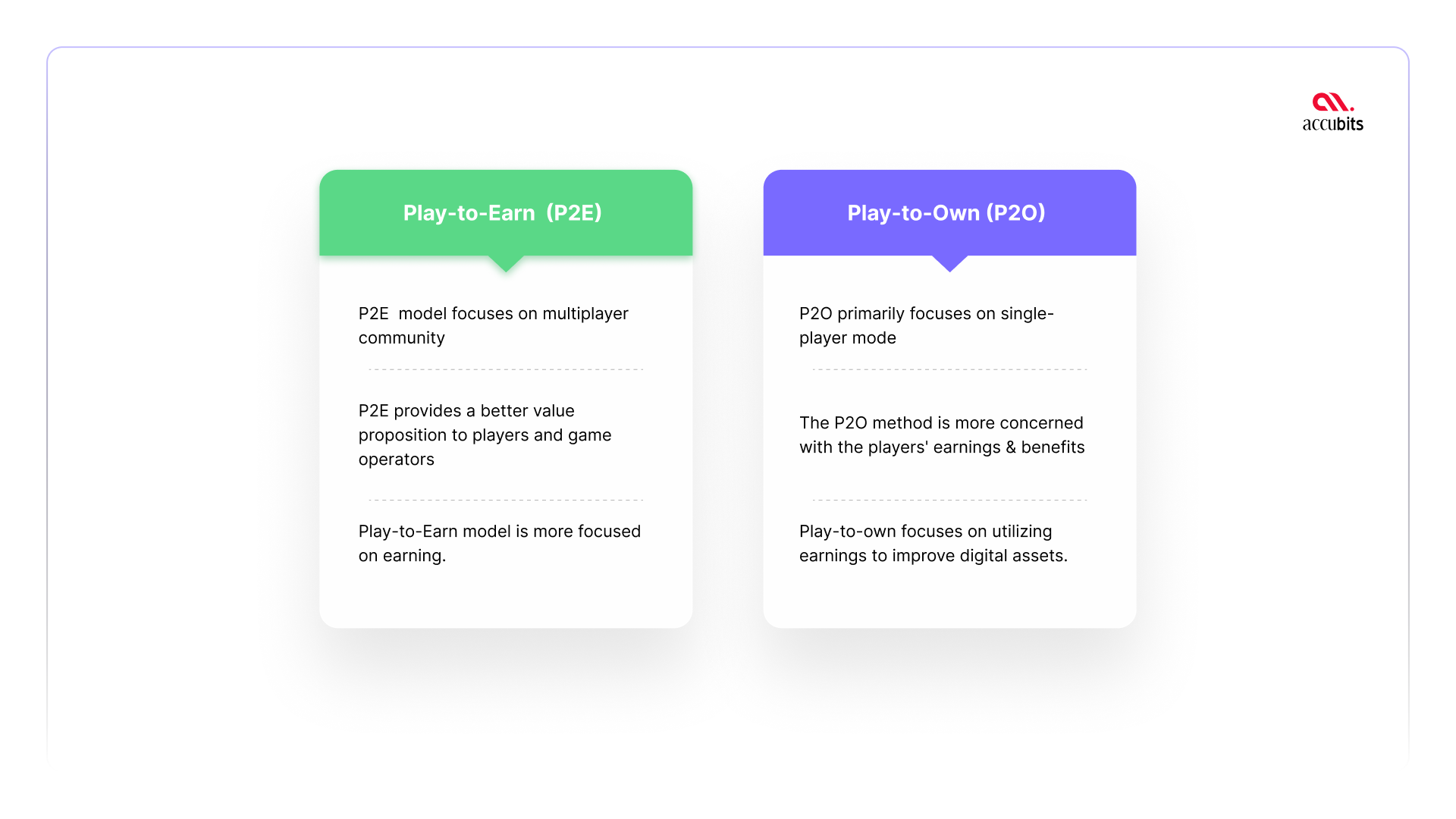

Today, the online gaming industry is one of the world’s fastest-growing entertainment sectors, with a market size of more than $242 billion projected in 2027, up from $107 billion in 2020. However, such massive profits frequently come at players’ expense because gaming companies must constantly develop new monetization models, many of which are widely regarded as exploitative. But wouldn’t it be great if players could profit from in-game economies — or at least recoup some of their investments? That’s exactly what supporters of the Play-to-Own gaming models aim for.
The play-to-own model and play-to-earn model only have a marginal difference. The Upland game popularised the concept. The game allows its players to own digital wealth similar to their homes, and as they earn rewards in the game, they can improve the condition of their digital assets. In these models, any digital asset acquired by the player always carries a tangible value because it can be put into liquidation in a marketplace or a peer-to-peer transaction. Ownership gives people a sense of security and status and the ability to feel ownership pride.
Like in the real world, a car owner will always invest more effort and time to keep his car in good condition, while a renter normally doesn’t do so to the same extent. This article explores the possibilities these gaming models can bring to gamers.
In most traditional games, the player knowingly or unknowingly follows the free-to-play or play-to-play model, i.e., the gamers only get entertained in a centralized gaming system and will not receive any compensation. However, with new innovative in-game economic models, players can now get rewarded while playing the games.
Blockchain or decentralized games have introduced these models, entertaining and rewarding gamers for playing their favorite games. The possession of the digital asset gives a player a sense of superiority in the game. Players who want to own and control their digital purchases, trading, and selling them, which is now possible with non-fungible tokens and blockchain. Blockchain also opened up new possibilities for accessing game goodies, and owning and trading them.
Get in touch with us
Game operators will handle game data, delete it, or create unfairness in the traditional gaming system. Furthermore, the ownership of the merchandise in the game belongs to the game operator, and the security of a game purchased by the player is not guaranteed as the game’s protection rights are in the operator’s hands.
While both methods aim to provide entertainment and other perks to the players, they also differ significantly. Let’s look at some of the differences between these models:

P2E games have some of the most vibrant and active communities in the gaming world. For example, the Axie community has 106,000 daily active users in P2E games. This model is relatively new and still growing compared to the play-to-earn model. The reason for the growing community is that most Play-to-Earn games allow players to work together to complete the game’s quests and missions and split the prize pool.
The P2O model focuses primarily on the single-player mode, which means that the model revolves around the single-player growing in the game and improving its assets by winning and conquering the game’s tasks.
The Play-to-Own method provides a better value proposition to both players and game operators. Players may prefer these games to traditional ones due to game benefits such as ownership security and long-term use from value creation. The business of this gaming model allows operators to observe more loyal customers.
The P2E method, on the other hand, is more concerned with the players’ earning benefits during gameplay. The operator of P2E games may have a long-term player, but the chances are slim because of the redundancy or the single-player mode within the game.
The gaming sector has grown tremendously after introducing blockchain games in and around the industry. The Play-to-Earn games have subsequently aided the blockchain’s early growth and promoted the most widespread adoption of the blockchain in the gaming industry. However, this model is in its infancy, and game developers are still evaluating its potential.
Play-to-earn games are heavily woven around the earning model, compromising the entertainment factor. The developers may prioritize delivering the game’s economic models over adapting the model that provides more engagement to the packers.
On the other hand, the P2O model takes the points in this as developers must create more engaging gameplay to attract players.
The major difference in both of these models is asset utilization. As the P2E model is more focused on earning, the players can use the game assets to earn digital currencies to pay cash in the real world.
In contrast, the assets of the play-2-own model focus more on winning the currency and utilizing that money to improve the digital assets.
It should be a global opportunity for you to explore and own the game world because everyone has a cell phone, and most of us are interested in playing games. Both gaming models have advantages and disadvantages. As a result, the players can make their choices based on their preferences. No model is superior to the other, as the Play2Earn model offers more benefits to players while the Play-To-Own method offers engagements.
Get in touch with us now